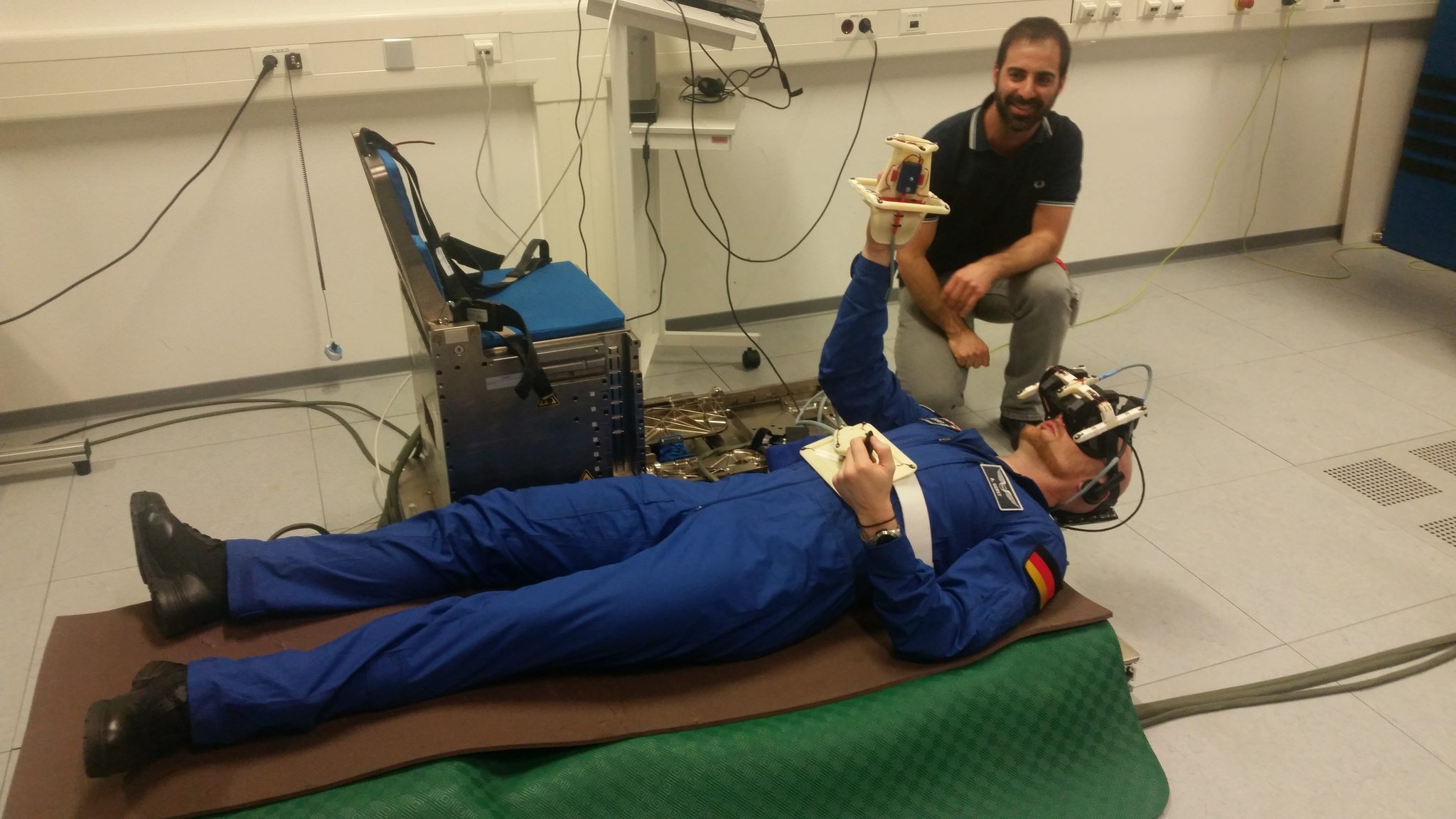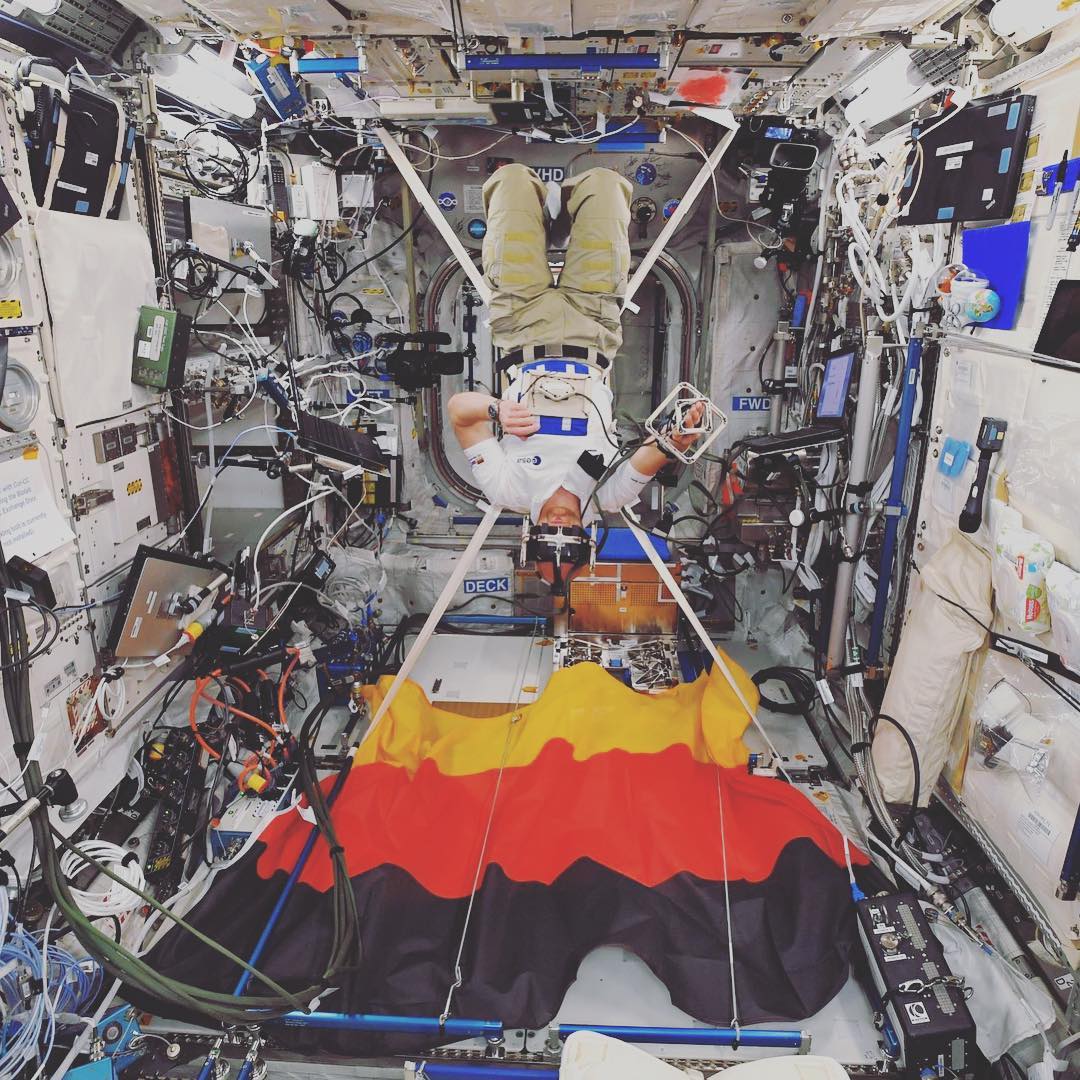German ESA astronaut Alexander Gerst is participating in a study aboard the International Space Station (ISS) that’s designed to give Earth-bound researchers a better understanding of how sight, sound, and gravity impacts hand-eye coordination. Using a modified Oculus Rift, Gerst isn’t strapping in for fun and games though (even if Echo VR or Space Junkies would take on a whole new level of immersion).
The French study, dubbed Gravitational References for Sensimotor Performance (GRASP), is headed by Dr. Joe McIntyre of the French National Center for Scientific research. The ISS study is a part of his wider work on Sensori-motor Adaptations and Vestibular Pathologies.

“We address questions on spatial orientation, a system-level topic, by studying its underlying functional and structural determinants in animal models, as well as by analyzing human behavior on earth and in space. We rely on a wide range of experimental approaches, using both animal and humans, and we carefully tie together these different levels of investigation in an overreaching framework,” the team says.
First used by ESA astronaut Thomas Pesquet aboard the ISS during his mission in 2016, the modified Rift has been retrofitted with a custom infrared tracking rig that fits over the headset itself and integrated into a custom controller. An infrared sensor unit is also worn around the waist, which likely provides a better model of his hand’s position relative to Gerst’s body.

“Armed with an enhanced understanding of the physiology behind hand-eye coordination, researchers will be better able to treat disorders relating to vertigo and dizziness, balance, spatial orientation and other aspects of the vestibular system,” the ESA says in a statement. “It will also be helpful in guiding astronauts during spacewalks and developing the most effective ways of controlling robots remotely.
The ISS has played host to many cutting edge consumer devices used for research, including former station commander Scott Kelly’s time with HoloLens, which was meant to explore the possibility of instructing astronauts on real-time issues.
In an interesting turn of events, Earth-bound users can also explore their own personal VR recreations of the ISS, both through the International Space Station Tour VR on Steam (Vive, Rift) and through Mission: ISS on Oculus Home (Rift).






